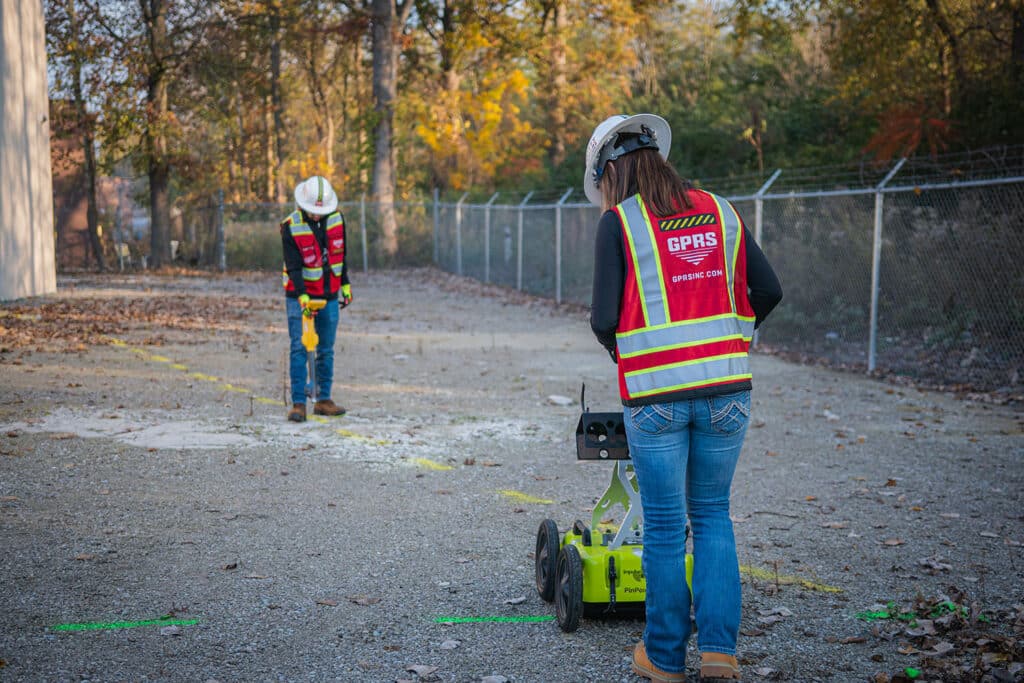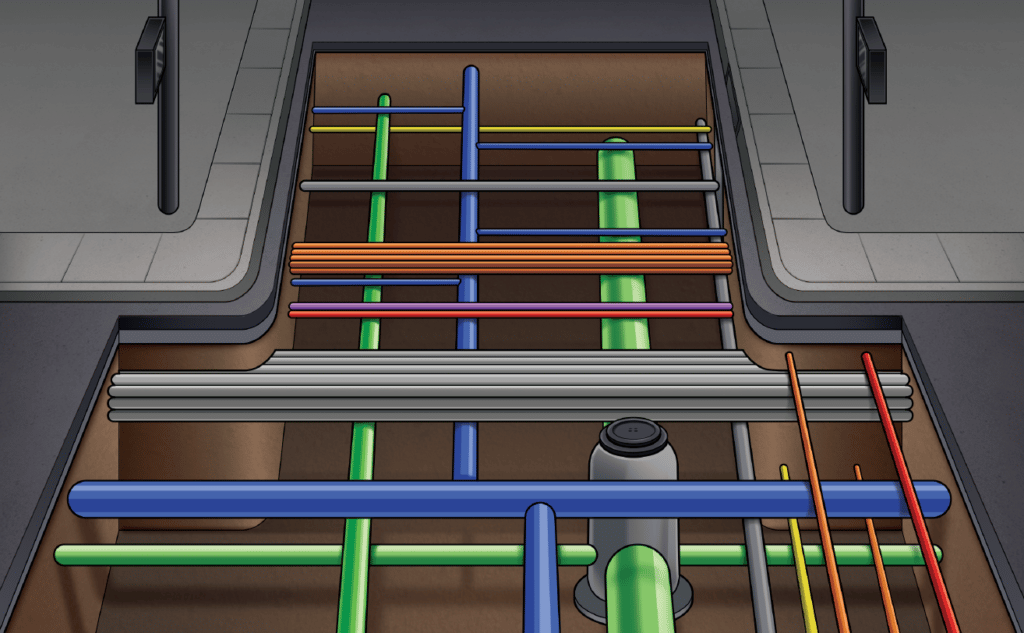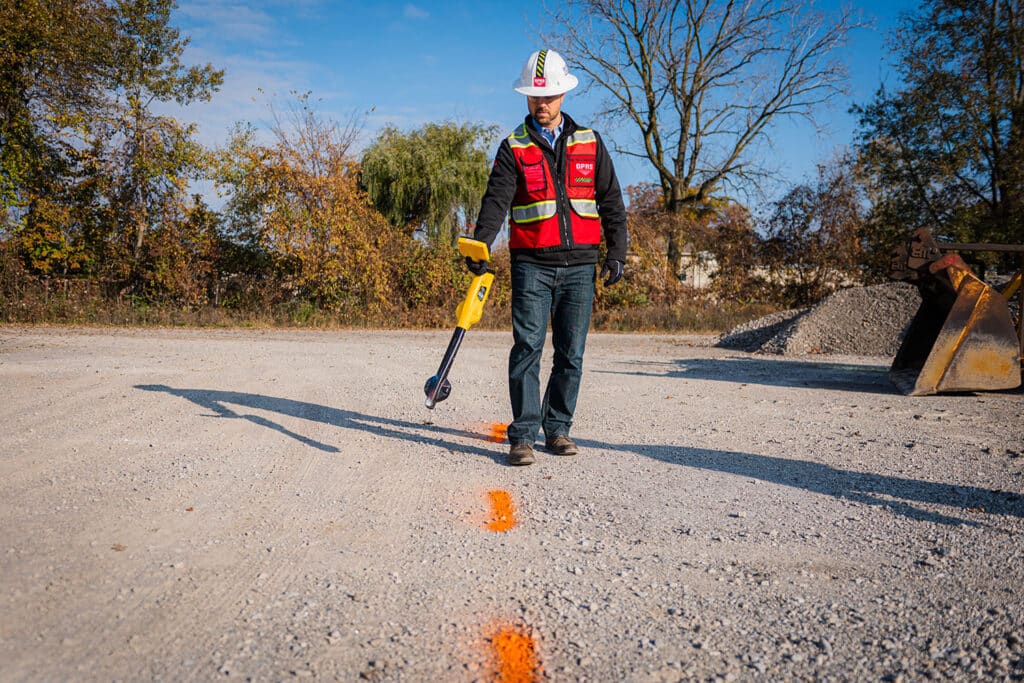
Subsurface Utility Engineering and Private Utility Locating: What Are They and How Are They Different?
It’s common to find underground utilities while performing tasks that involve digging, excavation, or construction projects. To avoid interruption of services, injuries, or destruction of essential utilities, you need to locate buried utilities before starting your trenching or drilling project. You might incur hefty fines for the damaged utilities or significant project delays, so we recommend hiring subsurface utility engineering (SUE) or private utility locating services before you get started on your project.
It’s easy to confuse the two since they both involve locating underground utilities using sophisticated locating equipment like ground penetrating radar, CCTV, and concrete scanning equipment. However, both are essential to prevent inconveniences or deadly accidents.
Private Utility Locating
Private utility locating helps to identify underground utilities in private, municipal, and commercial properties. All utilities that are found will be visually marked with paint, letting all field personnel know that they need to avoid that area. Some of the utilities that are typically discovered and marked include:
- gas pipes
- backup generator lines
- sewer laterals
- septic tank pipes
- irrigation systems
- storm drains
- site lighting lines
- telecommunication lines
Private utility locating services are also useful in facilities like schools, hospitals, apartments, and military installations that are not considered public-owned. Remember that these utilities are below the ground and may not be visible, so calling for private utility locating services is the best thing to do.
Performing an excavation before locating private utilities can lead to severe injuries to construction workers. Also, fixing or repairing damaged underground utilities can be expensive and time-consuming. Sometimes the repair may involve trenching or drilling the entire area. If an underground utility is damaged, it’s up to the project manager on-site to fix it as soon as possible. This can also come with hefty fines and cause delays with the project.

Subsurface Utility Engineering (SUE)
Subsurface utility engineering is comprehensive subsurface utility locating to find underground utilities like cable lines and gas lines. The results help project managers make informed decisions about whether to re-design the projects or relocate the utilities ahead of the beginning of the project. Read more from the U.S. Dept of Transportation here.
SUE services identify and eliminate project risks to avoid surprises that may arise while the project is underway. Subsurface utility engineering combines geophysics, surveying, and civil engineering and incorporates technologies like surface geophysics, vacuum excavation, and utility mapping.
SUE reduces project delays caused by waiting for utility owners to relocate utilities before the project can begin. Besides, project designers don’t have to start re-designing the project in case of a utility conflict. Some of the activities involved in the SUE process includes:
- Utility mapping
- Utility coordination and design
- Utility relocation and accommodation cost estimates
- Condition assessment
Together with site surveys, geophysical and civil engineering techniques, SUE services will provide quality information to the concerned parties.
SUE Quality Levels
Subsurface utility engineering classifies the underground utilities into quality levels in each stage of the process. These levels allow the project managers to decide which level of information they intend to use to mitigate the risks ahead. There are four SUE quality levels, ranging from quality level D to quality level A (lowest to highest)
- Quality level D: This is the lowest quality level that involves records research by sourcing records in physical or digital models. The information comes from available utility records and may only estimate underground utilities in the area. Project managers and designers can use this information for primary planning since it may not be accurate.
- Level C: For Quality Level C, the subsurface utility engineering team can survey utility features and compare them with the information sourced from the previous quality level. Some of the utility features identified in this quality level include valve boxes and maintenance holes.
Most project designers can’t solely rely on this information since some utility companies & utility owners may fail to use these features. The information under this level can be used in areas where relocating or repairing the utilities is not expensive.
- Level B: The subsurface utility engineering team applies the necessary technical methods to determine the exact position of utilities, including around the project area. Information acquired in the level b data quality level can be used to achieve preliminary engineering objectives.
- Level A: This is the highest quality range where stakeholders can acquire information to develop the actual plan. It involves identifying the horizontal position and vertical location of the utility using SUE techniques like non-destructive vacuum excavation.
So, What’s the Difference?
The difference between subsurface utility engineering and private utility locating is that subsurface utility engineering is more comprehensive, with clearly defined quality levels A-D. SUE often requires the services of an engineer. It includes identifying utility information & collecting utility data using geophysics, surveying, and civil engineering with technologies like surface geophysics, vacuum excavation, and utility mapping.
The American Society of Civil Engineers’ (ASCE) Standard Guideline for the Collection and Depiction of Existing Subsurface Utility Data was published and distributed in 2003. The ASCE standard makes it very clear that SUE is a process, not a technology. It defines SUE as a branch of engineering practice.
The cost of a SUE project is higher than private utility locating services since it involves preliminary preparations, sophisticated utility locating techniques, and extensive research.

Bottom Line
Identifying underground utilities is the first step towards the success of any project involving excavations.
If you need engineer-quality drawings that clearly map out the underground utility infrastructure using geophysical, land surveying, or geological services, contact a professional SUE company for assistance.
If you need private utility locating, with all utilities visually marked with paint, contact GPRS today to schedule an appointment.
